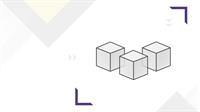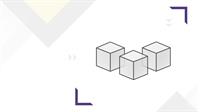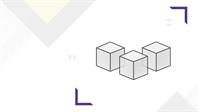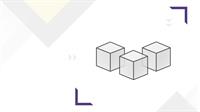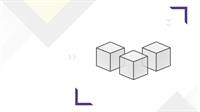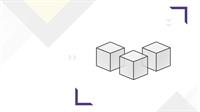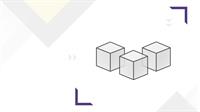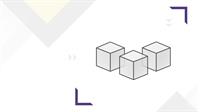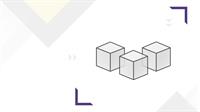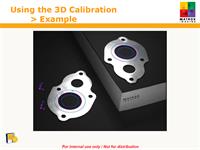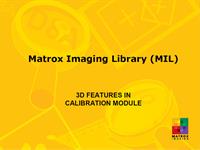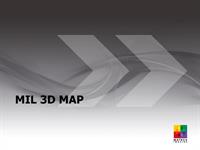Using Metrology: Edgel management of external edgel features for 3D profile/cross section analysis
Explores how you can use Metrology to analyze external edgel features such as 3D profiles and cross sections.
This video was made for MIL 10 PP3 and beyond.
Explores how you can use Metrology to analyze external edgel features such as 3D profiles and cross sections.
This video was made for MIL 10 PP3 and beyond.
Setting up the Matrox AltiZ for scanning in Matrox Capture Works
Explains the steps for using the Matrox® AltiZ to capture single profile scans as well as multi-profile surface scans with and without an encoder.
Explains the steps for using the Matrox® AltiZ to capture single profile scans as well as multi-profile surface scans with and without an encoder.
Acquiring 3D data with the Matrox AltiZ
Explores how the Matrox® AltiZ acquires 3D data and stores it in containers.
Explores how the Matrox® AltiZ acquires 3D data and stores it in containers.
Adjusting the AltiZ to improve 3D reproduction quality
Decribes how the Matrox AltiZ acquires 3D data and explores strategies for improving 3D reproduction quality when scanning objects that are very dark, very textured, or highly reflective.
Decribes how the Matrox AltiZ acquires 3D data and explores strategies for improving 3D reproduction quality when scanning objects that are very dark, very textured, or highly reflective.
Mounting and Powering your Matrox AltiZ
Describes best practices for mounting and powering the Matrox AltiZ
Describes best practices for mounting and powering the Matrox AltiZ
Configuring your AltiZ's encoder and trigger settings
Explains how to resolve some common setup errors when using the AltiZ with an encoder.
This video was made for MIL X and beyond and Design Assistant X and beyond.
Explains how to resolve some common setup errors when using the AltiZ with an encoder.
This video was made for MIL X and beyond and Design Assistant X and beyond.
3D Fundamentals: Projecting a point cloud to a depth map and other conversions
Explores the steps to project a point cloud to a depth map, including how to optimize an image buffer to receive a depth map projection. This video also explores converting a depth map into a point cloud.
This video was made for MIL X SP4 and beyond.
Explores the steps to project a point cloud to a depth map, including how to optimize an image buffer to receive a depth map projection. This video also explores converting a depth map into a point cloud.
This video was made for MIL X SP4 and beyond.
3D Fundamentals: First look at 3D containers
Introduces the use of containers to store 3D data, and explores several types of components.
This video was made for MIL X SP4 and beyond.
Introduces the use of containers to store 3D data, and explores several types of components.
This video was made for MIL X SP4 and beyond.
3D Fundamentals: Working with 3D containers
Describes the process of converting 3D data into a processable format, how to manipulate components, and how to track changes that are made to containers and components.
This video was made for MIL X SP4 and beyond.
Describes the process of converting 3D data into a processable format, how to manipulate components, and how to track changes that are made to containers and components.
This video was made for MIL X SP4 and beyond.
3D Fundamentals: Acquiring and preparing data from 3D sensors
Explores how to grab 3D data with a compliant and non-compliant sensor.
This video was made for MIL X SP4 and beyond.
Explores how to grab 3D data with a compliant and non-compliant sensor.
This video was made for MIL X SP4 and beyond.
3D Fundamentals: First look at 3D data and geometries
Describes depth maps, point clouds and 3D geometries.
This video was made for MIL X SP4 and beyond.
Describes depth maps, point clouds and 3D geometries.
This video was made for MIL X SP4 and beyond.
3D Fundamentals: Working with 3D geometry objects
Explains 3D geometry objects, how to create them and how to use them.
This video was made for MIL X SP4 and beyond.
Explains 3D geometry objects, how to create them and how to use them.
This video was made for MIL X SP4 and beyond.
3D Fundamentals: First look at 3D display and graphics
Introduces 3D displays and graphic lists, including what types of 3D objects and graphics can be displayed and the structure of 3D graphics lists.
This video was made for MIL X SP4 and beyond.
Introduces 3D displays and graphic lists, including what types of 3D objects and graphics can be displayed and the structure of 3D graphics lists.
This video was made for MIL X SP4 and beyond.
3D Fundamentals: Displaying and annotating 3D content
Explains how to add 3D data, geometries and annotations to the graphics list of a 3D display, and explores how to change the display settings of 3D graphics.
This video was made for MIL X SP4 and beyond.
Explains how to add 3D data, geometries and annotations to the graphics list of a 3D display, and explores how to change the display settings of 3D graphics.
This video was made for MIL X SP4 and beyond.
3D Fundamentals: Changing the appearance of 3D content
Explains how to change the appearance of various 3D graphics in a 3D display.
This video was made for MIL X SP4 and beyond.
Explains how to change the appearance of various 3D graphics in a 3D display.
This video was made for MIL X SP4 and beyond.
3D Fundamentals: Changing the view of a 3D display
Describes how to use the fundamental view modes and other view modes to obtain the optimal view of a 3D display.
This video was made for MIL X SP4 and beyond.
Describes how to use the fundamental view modes and other view modes to obtain the optimal view of a 3D display.
This video was made for MIL X SP4 and beyond.
3D Fundamentals: Working with transformation matrices
Introduces transformation matrices. Explores how to use the 3D geometry module to perform a transformation.
This video was made for MIL X SP4 and beyond.
Introduces transformation matrices. Explores how to use the 3D geometry module to perform a transformation.
This video was made for MIL X SP4 and beyond.
3D Fundamentals: Introduction
Introduces the MIL 3D API and the 3D fundamentals course.
This video was made for MIL X SP4 and beyond.
Introduces the MIL 3D API and the 3D fundamentals course.
This video was made for MIL X SP4 and beyond.
Preparing point clouds: Registration
Demonstrates 3D registration in MIL and how to calculate the transformation matrices needed to align multiple point clouds
Demonstrates 3D registration in MIL and how to calculate the transformation matrices needed to align multiple point clouds
Preparing point clouds: Merging point clouds
Demonstrates how to combine multiple point clouds from different sources into a single point cloud.
Demonstrates how to combine multiple point clouds from different sources into a single point cloud.
Preparing point clouds: Sampling
Demonstrates how to reduce or increase the number of points in a point cloud. Sampling is usually used before 3D merging and 3D registration.
Demonstrates how to reduce or increase the number of points in a point cloud. Sampling is usually used before 3D merging and 3D registration.
Preparing point clouds: Introduction
Introduces the course Preparing Point Clouds
Introduces the course Preparing Point Clouds
Example Launcher: Tsai-based calibration
Explores the portion of the Mcal example that performs 3D calibration in Tsai-based mode.
This video was made for MIL 10 PP2 and beyond.
Explores the portion of the Mcal example that performs 3D calibration in Tsai-based mode.
This video was made for MIL 10 PP2 and beyond.
3D calibration: Overview
Explores how to set up and use the 3D coordinate systems, such as the camera coordinate system and the robot base coordinate system.
This video was made for MIL 10 PP2 and beyond.
Explores how to set up and use the 3D coordinate systems, such as the camera coordinate system and the robot base coordinate system.
This video was made for MIL 10 PP2 and beyond.
How to: Do 3D mapping
Explains the basics of using laser line profiling (sheet-of-light profiling) to create 3D models of objects.
This video was made for MIL 10 PP2 and beyond.
Explains the basics of using laser line profiling (sheet-of-light profiling) to create 3D models of objects.
This video was made for MIL 10 PP2 and beyond.
|









